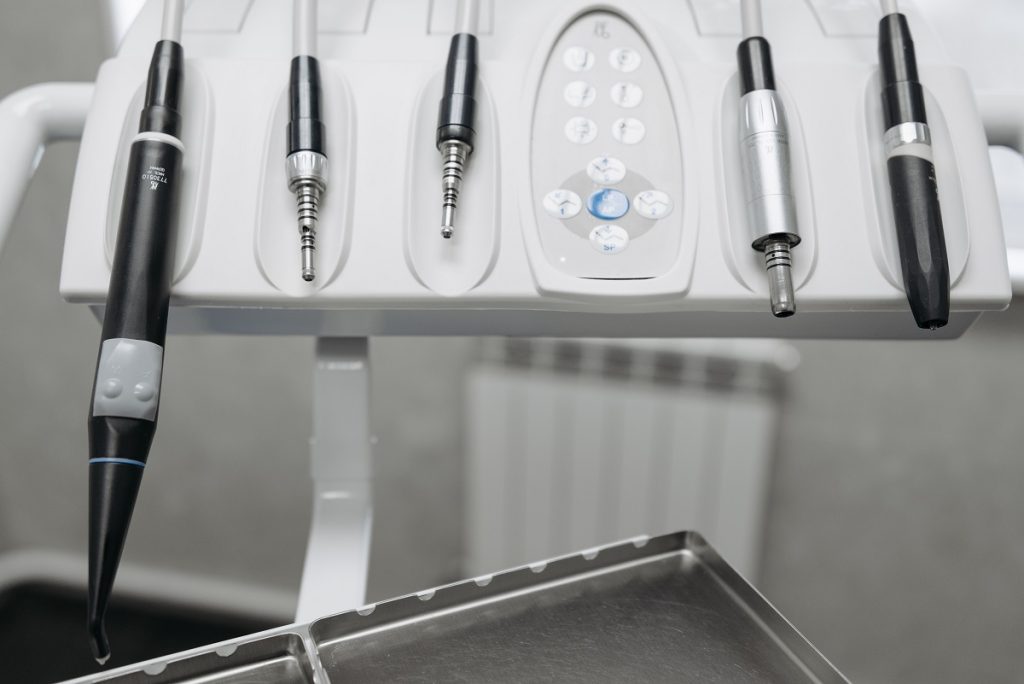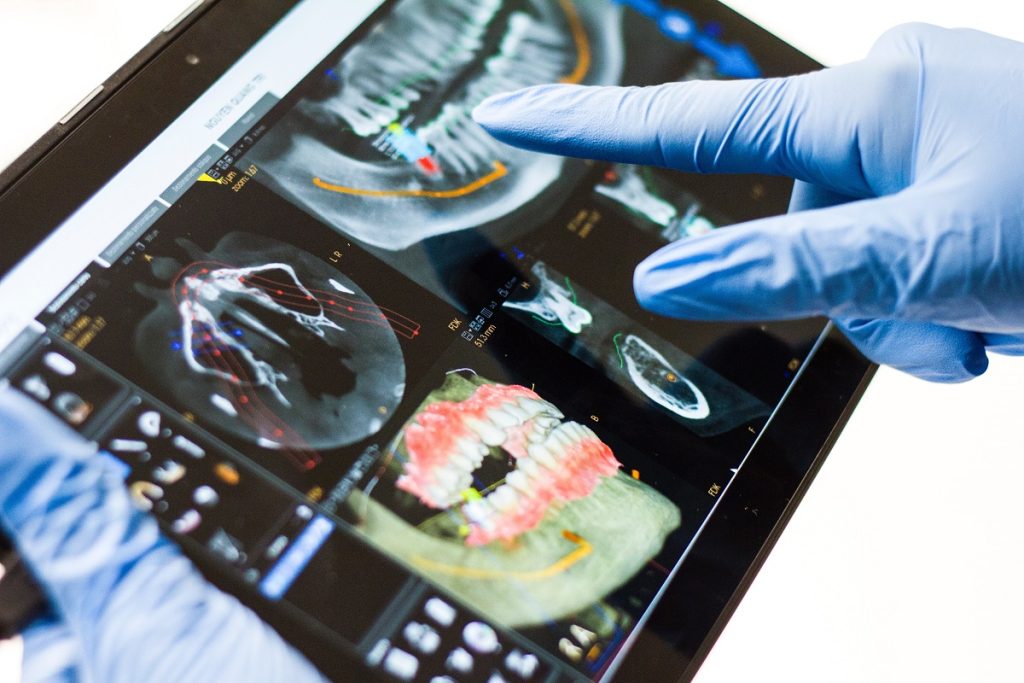Root Canal Treatment
Root Canal Treatment
It is okay if your endodontist recommends a root canal treatment to repair a damaged or cracked tooth. Each year, millions of people must go through root canal treatment, which reduces pain and recovers your original tooth.
A soft tissue called pulp is found inside your tooth, underneath the whiter enamel layer and a harder layer called dentin. This tissue comprises the blood circulatory system, connective tissue and nerves that support the development of the tooth’s root. A fully grown tooth can live on with tissues, providing nutrition without the pulp.
With the advent of contemporary medicine, Root Canal Treatment is a less painful and much safer alternative to restore your natural healthy teeth. Depending on the state of your tooth, it may often be done in one or two sessions and is comparable to a regular filling.
A root canal is comparatively painless and very efficient, but how?
A “root canal” is a structure of a tooth, not a medical procedure. The pulp, commonly referred to as the central part of a tooth, is where the nerves, vasculature, and other structures are located.
The crown and roots make up a tooth. The roots are primarily below the gum, while the crown is above it. The tooth’s roots secure it to the jawbone.
The pulp is located within the root canal and the crown. The pulp hydrates the surrounding tissue and feeds the tooth. The pulp’s nerves react to heat and cold by sending pain signals.
Root Canal is an endodontic treatment, which translates to “within the tooth.”
But the phrase “root canal” is frequently used to refer to the procedure.
A tooth is composed of two components. The portion of a tooth visible in the mouth at the top is called the crown.
The root of the tooth penetrates the jawbone and anchors the tooth there.
Teeth also include:
Ø Enamel, which is the tough exterior covering.
Ø Most of a tooth is made of the softer substance dentine, which supports the enamel.
Ø Cementum is a dense substance covering the root’s surface.
Ø The soft tissue in the middle of the tooth is called the dental pulp.
The dental pulp is housed within the root canal system, which runs from the tooth’s crown to the tip of the root.
More than one root canal can be performed on a single tooth.
A root canal may be necessary when the pulp (the soft interior of a tooth) is damaged, infected, or inflamed. While the pulp appears dead, the tooth’s crown, the part seen above your gums, can still be intact. Removing damaged or diseased pulp is the safest approach to protect the tooth’s structural integrity.
Here are typical explanations for pulp damage:
- An untreated cavity that progressed to extensive deterioration
- A tooth that has undergone many dental treatments
- A tooth that has a chip or fracture
- A tooth injury due to trauma or accident.
The most typical signs of pulp injury include tooth discomfort, inflammation and a heating sensation in the gums. Your dentist will check the affected tooth and conduct X-rays to diagnose the problem. If your dentist determines that you require a root canal, they may recommend an endodontist.
It usually requires one to three visits to complete the three phases of root canal treatment.
Anesthetic
The dentist will apply a little dose of the numbing drug on your gums close to the troubled tooth. Once it has taken hold, a local anesthetic will then be administered to your gums. There’s a chance you’ll experience a short pinch or burning feeling, but this won’t last long.
The anesthetic will keep you from experiencing any discomfort even though you’ll be awake throughout the process.
- Root canal cleaning
The dentist starts by clearing out the root canal of all the dead pulp or infected tissues.
The dentist creates a small hole on the tooth’s surface while the patient is under local anesthesia, then uses tiny files to eliminate the infected and dead pulp tissue.
- Root canal filling
The dentist uses irrigation solutions and tiny files to clean, reshape and disinfect the void space. Afterward, a rubber-like substance is used to fill the tooth and the root canals are entirely sealed with adhesive cement. The tooth dies during root canal treatment. Given that the infection and nerve tissue were removed from the tooth, the patient would no longer experience any pain from that tooth.
- Adding a Dental Crown or Filling in
Root Canal Treatment makes your teeth quite fragile. The ligament holding a tooth to the bone must provide sustenance for a tooth without pulp. While there is enough nutrition, the tooth will eventually become more fragile, so a filling or crown will provide security. The patient should refrain from biting or chewing on the tooth until the filling or crown is appropriately fixed. Treatment is often completed in a single sitting. However, if there are convoluted canals, multiple canals or significant infections, treatment may require one or two sessions.
One of the biggest concerns with Root Canal Treatment is that it can be painful. However, the procedure carried out by a qualified dental surgeon might be relatively painless. By using a local anesthetic to numb the tooth and its surroundings, the dentist will minimize any discomfort associated with the procedure. The infection is what causes the discomfort, not the treatment. Some pain following the procedure is usual. Uneasiness will disappear and OTC painkillers can be sufficient to ease it. Codeine and other prescription medications are readily available if necessary. The dentist may prescribe an antibiotic to prevent or treat the infection.
When the numbing effect goes away, your teeth and gums may feel painful and there are chances of gum inflammation. Most dentists advise you to take ibuprofen or acetaminophen for these symptoms if they are severe. If the discomfort worsens or stays for a few days, visit your dentist.
On the day following the surgery, you can get back to your regular schedule. Avoid biting the injured tooth until it has been properly filled or a crown fitted on top.
After a few days post your root canal therapy, you should visit your dentist. They will do X-rays to ensure that almost any infection has been removed. Here’s when your permanent filling will be done to replace the temporary one.
The dentist might permanently crown the tooth if you would want. Crowns are composed of gold or porcelain and are prosthetic teeth. Most people go for crowns because a crown’s advantage is that it looks realistic.
You might need a few weeks to adjust to how your tooth feels following the surgery. It is typical and not a reason for concern.
A root canal procedure is used to preserve your tooth. However, occasionally the harm is too severe or the enamel is fragile enough to withstand the treatment, which may result in tooth loss.
If part of the diseased material is left around or the medications are ineffective in treating the infection, an abscess is also dangerous to form near the tooth’s root.
You can consider getting an extraction with your dentist if you are worried about getting a root canal. The damaged tooth is typically replaced with dentures, bridges or implants.
If at all feasible, keeping your natural teeth is the best choice. Thanks to your natural teeth, you can consume many important foods to maintain a healthy diet. Your teeth may be saved through a root canal treatment. The only remedy for a root canal is the extraction of the tooth and placement of a bridge, implant or removable prosthetics. Compared to a root canal treatment, these options are more costly and take longer to heal.
Because significant decay, frequent dental operations or big fillings can cause the nerves and dental tissue to become swollen and diseased, there are precautions you can avoid a root canal:
Ø Try to brush your teeth at least twice every day.
Ø Make sure to floss every day.
Ø To prevent sports-related injuries, use a mouthguard.
Ø Visit the dentist frequently.
Toothache
Toothache is one of the most common causes of pain that you will encounter in your life. It can be mild or severe and generally centers around your teeth and jaws.
You could have wisdom tooth pain or a regular toothache, but pain generally indicates some concern in your tooth or gums. When you are in the middle of your toothache, you must go to a dentist and find out the root cause of your pain. Doing so will ensure that the pain does not persist for long. Many people do not prefer going to the dentist for minor issues like toothaches. Some toothaches are not severe and a few quick home remedies help alleviate your pain. However, if the toothache persists for two to three days, you should visit the dentist for a proper checkup.

Root Canal Treatment Renewal
How Do You Know When to Get a Root Canal Treatment Renewal?
There are great chances that you know about root canal treatments because you either have gotten a root canal or you know someone who has gotten one recently. Root canal treatments are done when the tooth is pulp has become infected. Root canal treatment involves the dentist removing the pulp from your tooth and cleaning it. Many people who engage in root canal treatments do so at a time when the pain is unbearable. Root canal treatments can last a lifetime, depending on when you get them done. However, some cases require root canal treatment renewals due to several factors.
Root canal treatment renewals are very similar to original root canal treatments. You will be given numbing medication, so you are in less pain than before. Once the mouth is numb, your dentist will remove the crown and reopen your teeth. They will then remove the filling and any untreated or infected tissue. It may take a while for them to properly go through your tooth and search for any additional treatment. Your dentist will then disinfect, refill and seal the tooth with the temporary filling or log you in for an appointment to fit you with a dental crown.
- There is something wrong with the canal anatomy. Bacteria can often hide in the small spaces between the teeth and even in the canal if they are not treated the first time.
- If there was a significant amount of time between the completion of the root canal treatment and the placement of the crown, then bacteria had enough time to infect the tooth and cause harm.
- The saliva might have contaminated the inside of the truth and the restoration did not account for this. There are also new problems that may harm teeth that did have successful root canal treatments.
- Problems such as new decays can present the root canal filling for attack by bacteria which may create a new infection.
- New trauma to the tooth, the loosening of the tooth and chipped crowns can cause new infections.
- If a tooth has gone through any breakage, the dentist must remove any fillings placed inside during the first root canal and provide retreatment.
Proper Timing: If you get root canals at the correct time, that is, as soon as your dentist tells you, the root canal will last longer. It is more common for canal anatomy to become complicated if the timing of treatment is delayed.
Quality of Treatment: After root canal therapy has been conducted; you will also need a crown or filling to protect it further. How soon after you get the crown or filling will affect the duration for which the tooth or root canal lasts. If you wait a long time, you will likely have to get a root canal treatment renewal later.
Age of Patient: If the patient is older, their teeth are more prone to breakage. The age factor can lead to an increase in root canal procedures.
Tooth Location: It is much easier to do if you have a front tooth that requires a root canal treatment renewal. Back teeth have many more roots than front teeth; thus, they are more complicated to treat. There are also much more likely to break or fracture, which can lead to issues with the restorative process.
Fiber Post
Teeth that go through the root canal treatment become more fragile because of all the fluid and density loss it bears as part of the treatment process. As root canal treatment involves the removal of the infected nerve tissue and fibers, depending on far deep the infection has spread, the dense material loss can be quite a lot.
Hence, the dental expert would recommend getting the fiber post-treatment by providing external support to the root of the tooth to stay firm in its place. This regimen allows your tooth to regain its function and stay adhered to its place. It is excellent for long-term options if you need the upper tooth region fixed.
Traditionally, dental experts would use a kind of brace that consists of stainless-steel screws, wires and pins to create support for the tooth from the root. Nowadays, fiber posts are more preferential for their ease of application and aesthetic qualities for dental tissue. It also prevents root weakening and maximizes support. Fiber post is easy, hassle-free and allows for a quick and complete recovery. It is an overall robust mechanism to get tooth support from the root.
Endocrown
Endocrown is a revolutionary subtype of onlay. The advent of adhesion, fueled by the creation of efficient dental adhesives, represented the advancement in the recovery of endodontically treated teeth. Adhesive restorations have a significant benefit; if an adequate area is present, macro-retentive components are not usually mandatory. Conforming to this concept, endodontically treated teeth with severe loss of tissue are restored using endocrowns as a prosthetic alternative. The inner pulp center and the hollow borders of the cavity would serve as supports for these crowns, ensuring macro-mechanical stability from the pulp walls and adhesive compaction. This technique is especially recommended when there has been an extensive loss of crown material, with minimal inter-dental space and conventional post-and-crown restoration is not feasible due to insufficient ceramic layers.
In contrast to typical crowns, the endocrowns are simple to use and take less time in the clinic. Endocrowns provide several benefits, including affordability, the convenience of application, little chair time and cosmetic qualities. Additionally, in cases with shorter or closed clinical crowns, mineralized, curved or narrow root canals, which render postoperative application problematic, endocrowns provide a viable option. A study of 3D Finite Element Analysis of teeth treated with endocrowns and posts during simulated mastication showed that teeth repaired with endocrowns might be more resilient to collapse compared to those with reinforced composites.
CAD/CAM is a form of computer-aided design and manufacturing software. The CAD/CAM system used in dentistry does not need the intermediary steps of typical restorative methods, such as making molds and fillings; instead, it uses a built-in camera to capture visual information of electronic impressions. As a result, this approach can prevent potential mistakes using primitive machines and tools for grinding. Patients and dentists alike are appreciating it more and more due to its benefits in accuracy, patient compliance and effective clinical restoration.
Root Tip | Apical Resection
Dental roots would always differ from person to person. For instance, you may find some people with lateral root canals and delta spaces. These little nooks and crannies are some of the most difficult-to-reach spaces in your mouth. That is why bacteria can quickly reproduce in these hard-to-reach corners.
The best way would be to fill in the gaps and create artificial blockage in the area to stop the bacteria from creating a base and spreading. However, conventional methods are unsuitable for doing this and end up allowing infection at the root tips. Hence, such a case calls for a solution that separates and removes the root tip region. As there is no area left for bacteria to grow, this minimizes the risk of infection. Root tip resection usually involves bone removal, cutting the root tip and closing it up.





